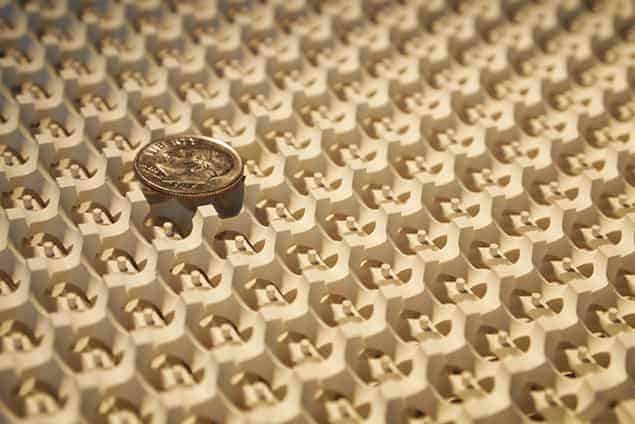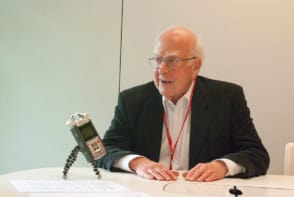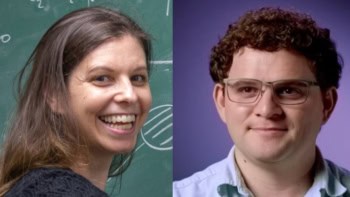
Evidence for the existence of particles called Weyl fermions in two very different solid materials has been found by three independent groups of physicists. First predicted in 1929, Weyl fermions also have unique properties that could make them useful for creating high-speed electronic circuits and quantum computers.
In 1928 Paul Dirac derived his eponymous equation, which describes the physics of spin-1/2 fundamental particles called fermions. For particles with charge and mass, he found that the Dirac equation predicts the existence of the electron and its antiparticle the positron, the latter being discovered in 1932.
Other solutions
However, there are other solutions of the Dirac equation that suggest the existence of more exotic particles than the familiar electron. In 1937 Ettore Majorana discovered a solution of the equation that describes a neutral particle that is its own antiparticle: the Majorana fermion. Although there is no evidence that Majorana fermions exist as fundamental particles, Majorana-like collective excitations (or quasiparticles) have been detected in condensed-matter systems. Another solution of the Dirac equation – this time for massless particles – was derived in 1929 by the German mathematician Hermann Weyl. For some time it was thought that neutrinos were Weyl fermions, but now it looks almost certain that neutrinos have mass and are therefore not Weyl particles.
Now, a group headed by Zahid Hasan at Princeton University has found evidence that Weyl fermions exist as quasiparticles – collective excitations of electrons – in the semimetal tantalum arsenide (TaAs). In 2014 Hasan and colleagues published calculations that suggested that TaAs is “Weyl semimetal”. This means that TaAs should have Weyl fermions in its bulk and a distinct feature on its surface called a “Fermi arc”. Using a standard technique called angle-resolved photoemission spectroscopy (ARPES), the team found evidence of a Fermi arc. The team then used a technique called soft X-ray ARPES to probe deeper into the bulk of the material, where it found further evidence for Weyl fermions in the form of “Weyl cones” and “Weyl nodes” – both of which were in agreement with the researchers previous calculations.
Fermi arcs have also been predicted and then spotted in TaAs by an independent research group that includes Hongming Weng and colleagues at the Chinese Academy of Sciences. The team, which has members at the Collaborative Innovation Center of Quantum Matter in Beijing and Tsinghua University, also used ARPES in its study.
Double-gyroid crystal
Meanwhile, at the Massachusetts Institute of Technology and Zhejiang University in China, Marin Soljačić and colleagues have spotted evidence for Weyl fermions in a very different material – a “double-gyroid” photonic crystal. This crystal is made from slabs of plastic with a matrix of holes drilled in them. The slabs are then stacked in such a way that there are continuous paths through the crystal for microwave radiation to follow.
The physics of the Weyl fermion are so strange, there could be many things that arise from this particle that we’re just not capable of imagining now
Zahid Hasan, Princeton University
The team fired microwaves at the crystal and measured microwave transmission through the crystal while changing its orientation to the incident microwave beam – and varying the frequency of the microwaves. This allowed the researchers to map out the photonic band structure of the crystal, which reveals which microwave frequencies can travel through the crystal and which cannot. This revealed the presence of “Weyl points” in the band structure, which are indicative of Weyl fermion states existing in the photonic crystal.
“The discovery of Weyl points is not only the smoking gun to a scientific mystery,” says Soljačić, adding, “it paves the way to absolutely new photonic phenomena and applications.”
Fast and robust
Weyl fermions could be very useful because their massless nature would allow them to conduct electric charge through a material much faster than normal electrons – which could be used to create faster electronic circuits. This property is also shared by electrons in graphene. However, unlike graphene, which is a 2D material, Weyl fermions should exist in more practical 3D materials. Furthermore, Weyl particles are topologically protected from scattering, which means that they could be useful in quantum computers.
Hasan is also enthusiastic about how the discovery of Weyl fermions could lead to further advances: “The physics of the Weyl fermion are so strange, there could be many things that arise from this particle that we’re just not capable of imagining now.” Indeed, Hasan told physicsworld.com that Weyl could become a “motherboard for future electronic devices”, because they combine high mobility with topological protection.
The Hasan and Soljačić studies are described in separate papers in Science: 10.1126/science.aaa9297 and 10.1126/science.aaa9273. The work by Weng and colleagues is described in a preprint on arXiv.



